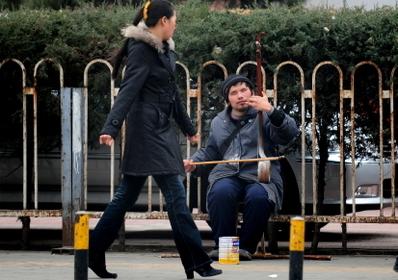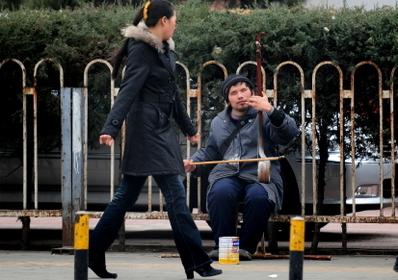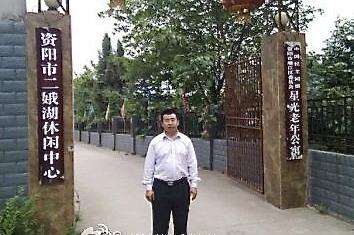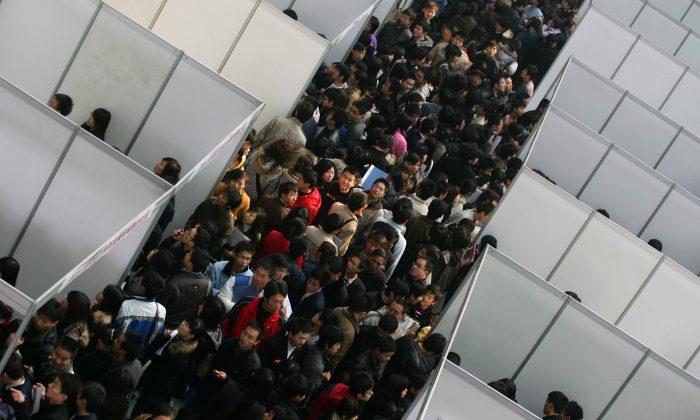News Analysis
China is dangerously close to a catastrophic political, economic, and social meltdown, according to a Chinese business scholar, who cites China’s growing income gap as one of its serious crisis indicators.
According to two recent reports, China’s Gini coefficient, which measures income inequality, has been above 0.6 for the past two years, far exceeding the international alarm level of 0.4.
One report, released on Dec. 9 by the Chinese Household Finance Survey Center of Chengdu’s Southwestern University of Finance and Economics (SUFE), cited a 0.61 Gini coefficient based on a 2010 survey of 8,438 Chinese households.
The report also said that such an enormous income gap as exists in today’s China is a rarity in the world. The United Nations estimates that a Gini coefficient of 0.4 and above may lead to social unrest.
Another report published by Hong Kong’s Cheng Ming Magazine in November said China’s Gini coefficient was 0.613 during the first half of 2012.
China’s Gini index may even be higher than 0.613, according to Dr. Tianlun Jian, a specialist on China’s economy and an Epoch Times commentator. “We all know that the Chinese society is deeply polarized [between rich and poor],” he told New Tang Dynasty (NTD) Television.
Dr. Frank Xie, who teaches business at the University of South Carolina, Aiken, said in a recent article that he expects China’s Gini number will continue to grow and quickly approach the 0.7 world record held by South Africa.
The income gap is just one of many signs suggesting that China is close to a meltdown, according to Xie.
Xie estimates that there were over 200,000 mass incidents in China in 2012. “While the world has closely watched for the ‘fiscal cliff’ in the U.S., people should realize that China is rushing over the edge of a real cliff of a political, economic, and social crises,” Xie said. “It means big trouble for the world.”
Chinese authorities have not published the nation’s Gini coefficient since 2001, citing incomplete data on high-income groups as the main reason.
Unlike other economic problems that can be corrected by proper measures, once the Gini index exceeds 6, it is almost impossible to reverse, and can only get worse, according to New York City University economics professor Chen Zhifei. This poses the greatest threat to the Chinese communist regime, and that’s why they have not been publishing the Gini index, Chen told NTD Television.
Rural Inequality and Unemployment
Rural versus urban inequality has long been recognized as a key factor in China’s income gap. Not only does the rural income level fall far below the urban level, but the income inequality is also more obvious within rural regions. The SUFE report shows that the income gap is greater in rural areas, with a Gini coefficient of 0.60, compared to 0.56 in urban areas.
Another notable factor is high unemployment rate. The SUFE study suggests that China’s national unemployment rate was 8 percent in July 2011, suggesting an unemployed population of 27.7 million, which is almost twice as high as what authorities have admitted to. The unemployment rate doubles for 51-55-year-olds, reaching 16.4 percent, and is attributed to mergers and standardized bankruptcy of state-owned enterprises in the early 2000’s. (An explanation of mergers and standardized bankruptcy are available here and here.)
Surprisingly, the unemployment rate for 21-25-year-olds who hold college or above degrees is also 16.4 percent—the same as for the 51-55-year age group. By contrast, the rate for 21-25-year-old poorly educated migrant laborers from rural areas is only 3.4 percent. A shortage of cheap labor has affected some of China’s key export industries such as apparel and electronics, especially on the east coast.
But the root cause of the income inequality and a battery of other economic problems in China can be found in the communist regime’s overexploitation of social wealth, according to Winifred Tung, an attorney and commentator from Taiwan.
The exploitation has been realized largely through preferential policies in favor of state-owned enterprises and suppression of the private sector, Tung told NTD Television, citing recent data, which says that the GDP of large-scale state-owned enterprises (SOEs) accounts for 60 percent of China’s overall GDP. However, among the different culprits of tax evasion in China, SOEs came in first place with 26-28 percent.
The Epoch Times publishes in 35 countries and in 20 languages. Subscribe to our e-newsletter.
Click www.ept.ms/ccp-crisis to read about the most recent developments in the ongoing crisis within the Chinese communist regime. In this special topic, we provide readers with the necessary context to understand the situation. Get the RSS feed. Who are the Major Players?






Friends Read Free